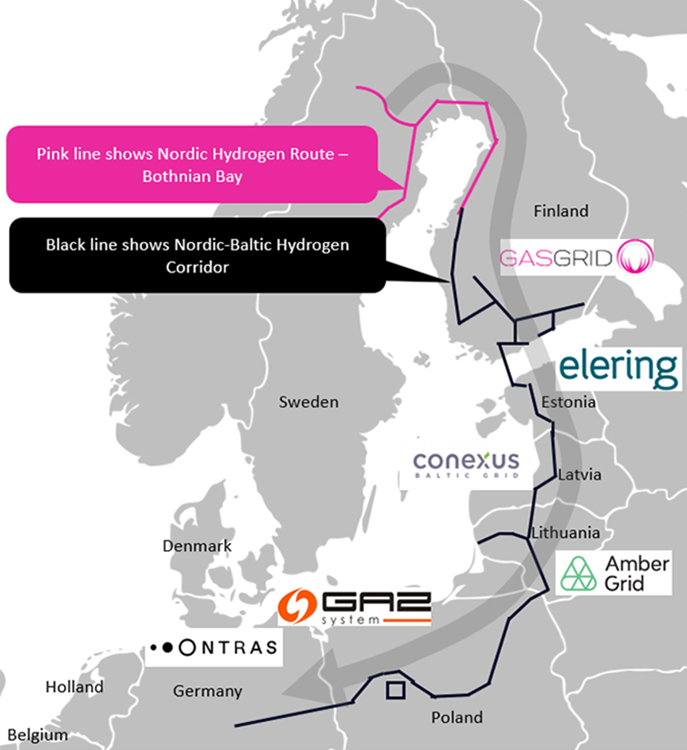European initiatives
On the path towards a European hydrogen infrastructure
The establishment of a functioning hydrogen economy requires important national collaborations as well as strong European allies. In particular, the European Hydrogen Backbone and Nordic Baltic Hydrogen Corridor collaborations are vital for the development of the hydrogen economy in Eastern Germany, especially with a view towards sustainable infrastructure.

European Hydrogen Backbone
The “European Hydrogen Backbone” (EHB) consists of 32 energy infrastructure operators with the declared goal of accelerating Europe’s path towards decarbonisation. It is focussed on establishing hydrogen infrastructure based on existing and new lines to create a competitive European market for renewable hydrogen. A total of five pipeline corridors are planned in order to meet the demand for hydrogen as per the 2030 targets of the REPowerEU plan and to strengthen Europe’s energy independence.
The five pipeline corridors
- Corridor A: North Africa and Southern Europe
- Corridor B: Southwest Europe and North Africa
- Corridor C: North Sea
- Corridor D: Nordic and Baltic regions
- Corridor E: East and South-East Europe
The five corridors coincide with the three corridors presented in the REPowerEU plan as well as its three import corridors. One corridor runs across the Mediterranean Sea (corridor A and B), another across the North Sea (corridor C) and a third through Ukraine (corridor E).

Nordic Baltic Hydrogen Corridor
The Nordic Baltic Hydrogen Corridor is a collaborative project between the six European transmission system operators Gasgrid Finland (Finland), Elering (Estonia), Conexus Baltic Grid (Latvia), Amber Grid (Lithuania), GAZ-SYSTEM (Poland) and ONTRAS (Germany). Together, they initiated the Nordic Baltic Hydrogen Corridor with the aim of strengthening energy security in the region and reducing their dependence on imported fossil fuels. Besides this, the project also has enormous potential in terms of contributing to the achievement of the EU target of reducing greenhouse gas emissions by replacing existing fossil fuel-based production as well as the consumption of fossil fuels in industry, transport, electricity and heating with the production and consumption of green hydrogen. The project strongly supports the EU hydrogen strategy and the REPowerEU plan. What’s more, the Nordic Baltic Hydrogen Corridor supports several regional and European climate targets, such as the European Green Deal and Fit for 55.